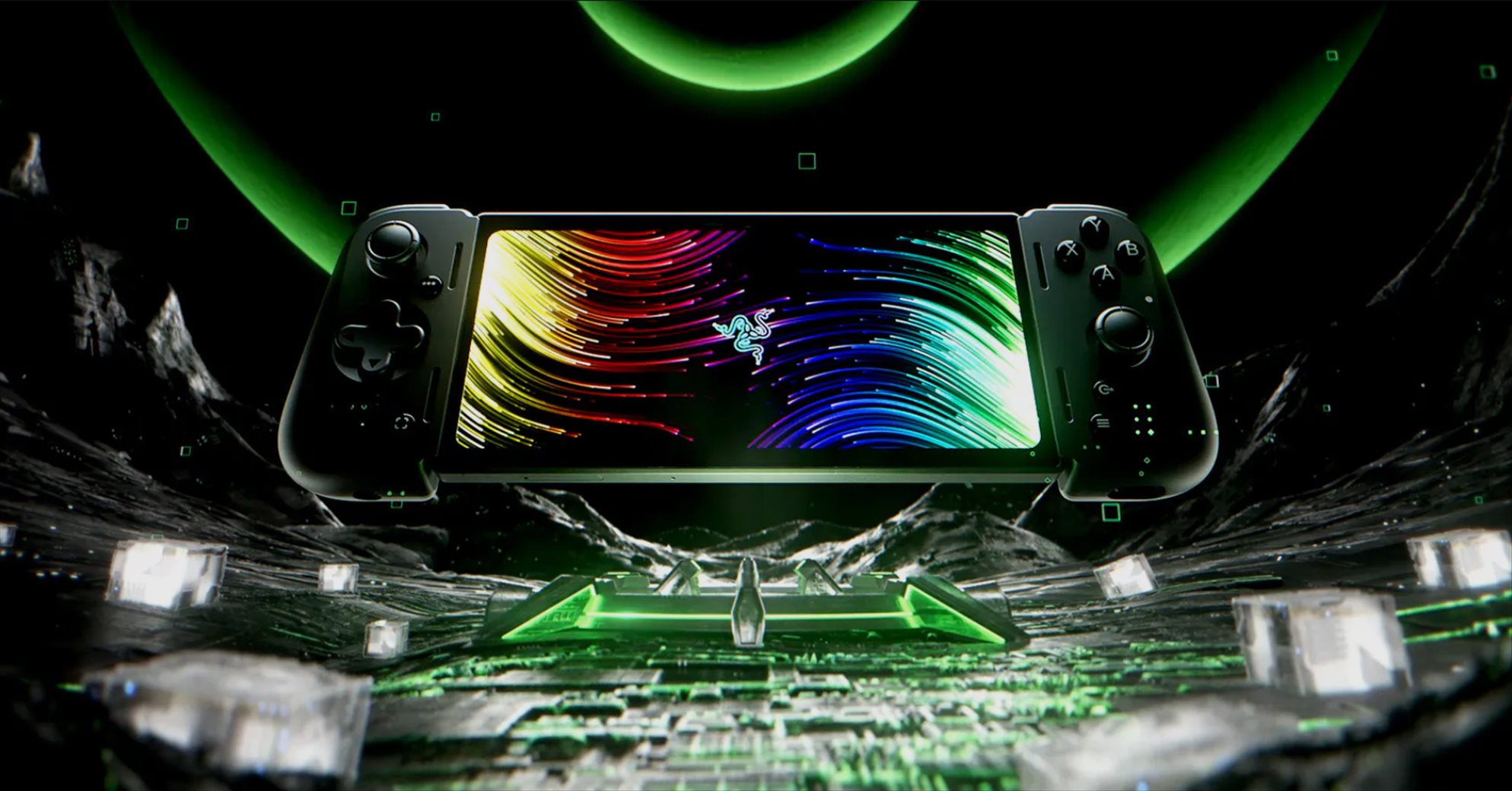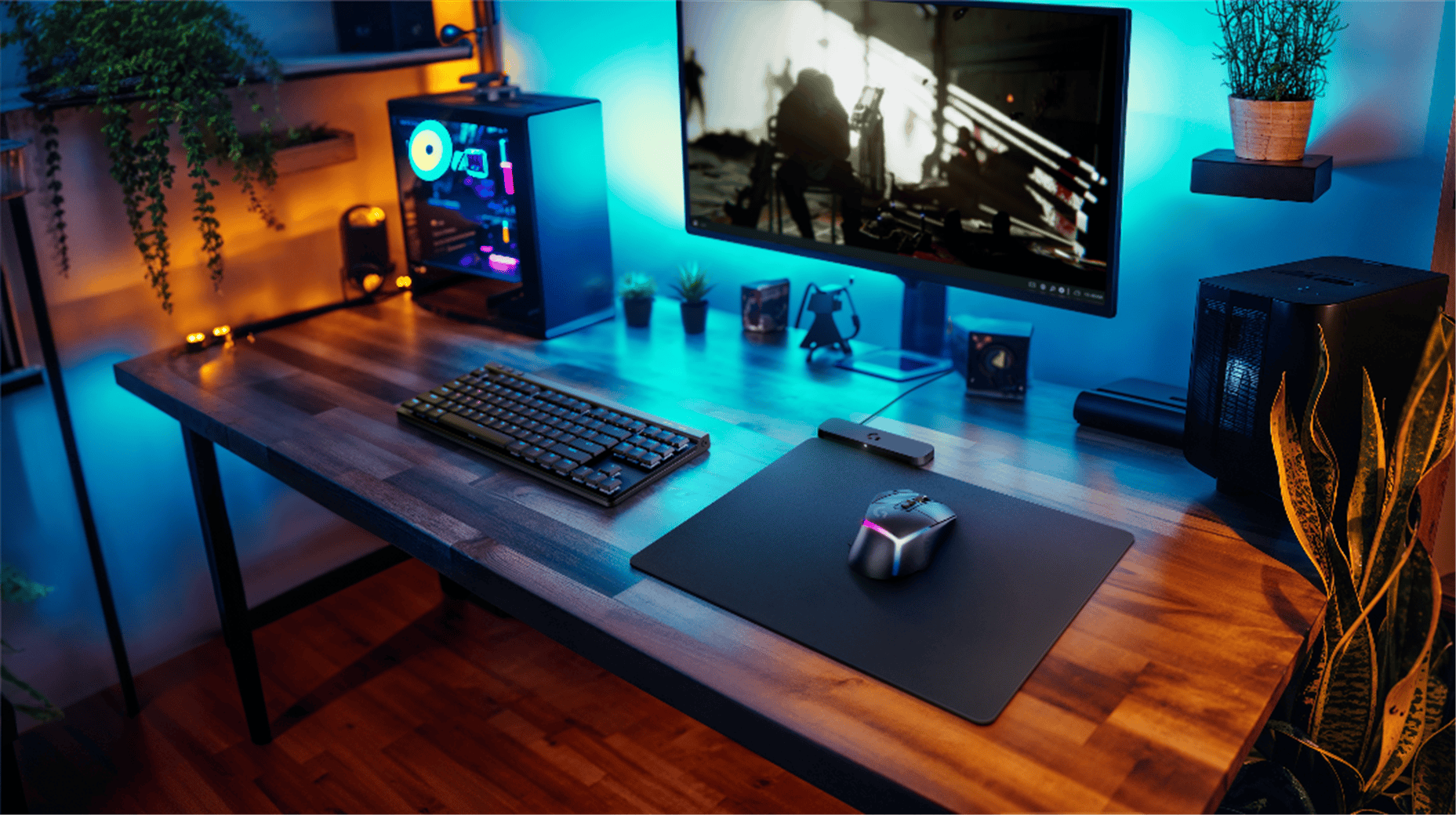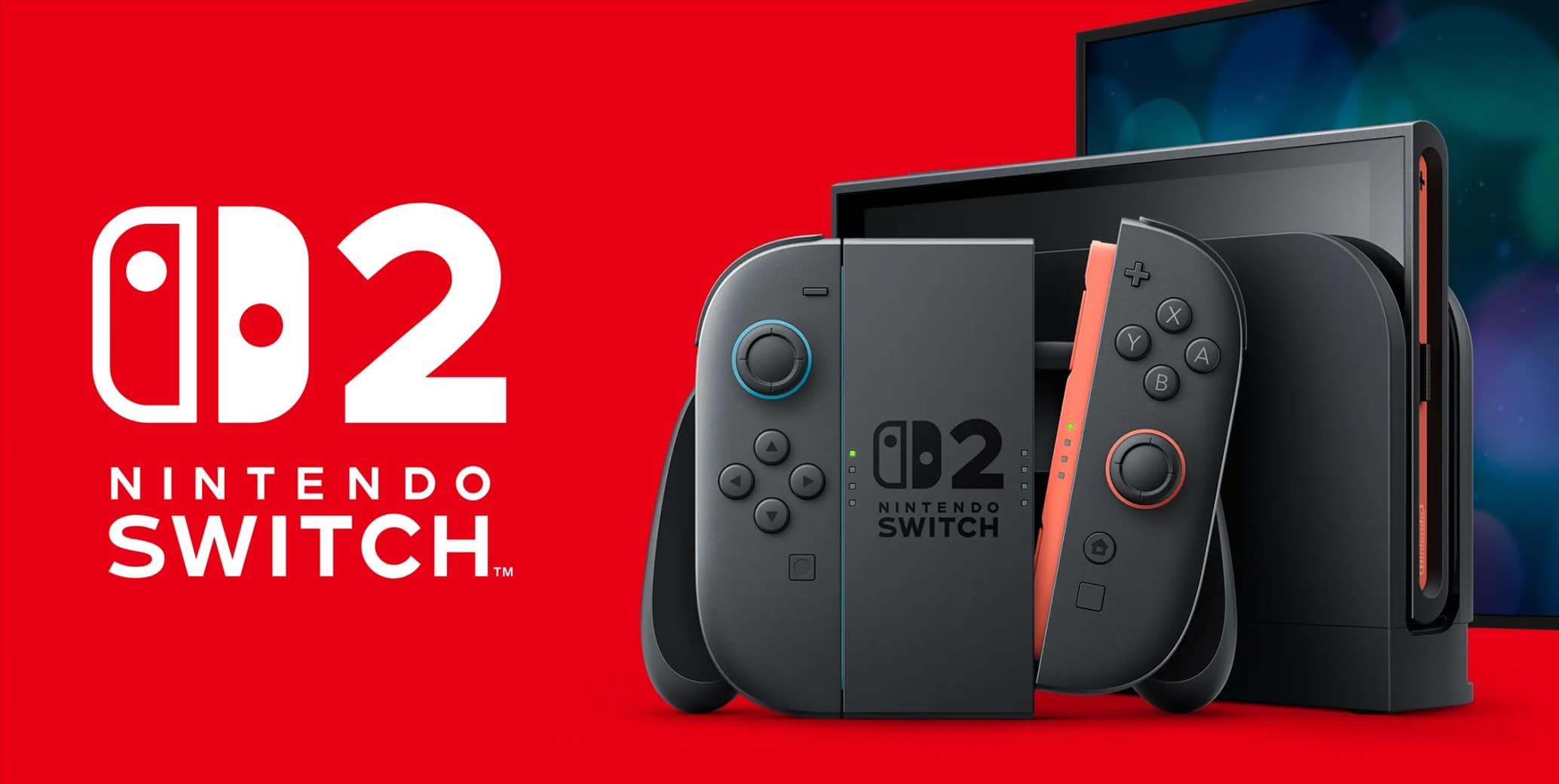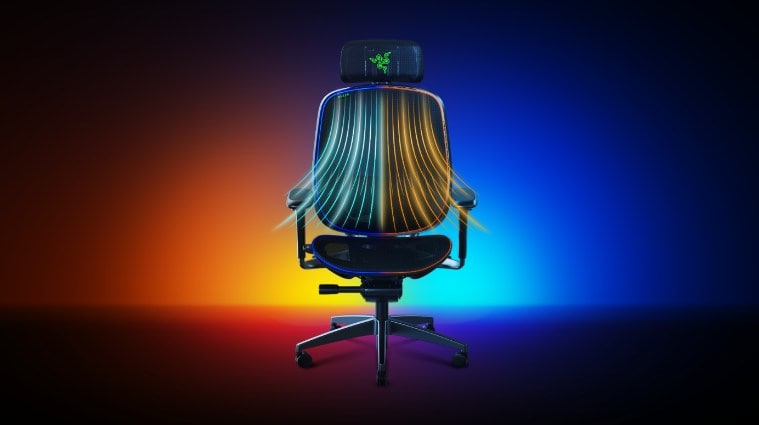
Handheld gaming PCs are real powerhouses for playing video games on the go. Do handheld Android gaming consoles pack the same processing power? If not, which is more powerful and worth getting between the Logitech G Cloud vs Razer Edge Android gaming device?
Both Logitech and Razer are names synonymous with video gaming. The companies are most famous for their gaming gear, accessories, and software. But they have also decided to join the growing handheld gaming industry. In this quick guide, we’ll be comparing their new consoles to see which is a better investment.
Verdict: Top Pros and Cons of the Handheld Android Gaming Consoles
Positives/ Pros of Razer Edge
- It has a high-performance Android chipset
- Has a crispy 1080p FHD+ OLED display
- Compatible with up to WiFi 6E connectivity
- Supports local, stream, and cloud gaming
- Features a decent battery life of up to 11+ hours
- Supports both standard 3.5mm jack & Bluetooth
- It has a removable Controller to enhance portability and versatility
Drawbacks/ Cons of Razer Edge
- It is relatively pricier than competitors
- Has no built-in trackpads to emulate the mouse
- You can’t install games on the MicroSD yet
- It also doesn’t have a HDMI or Ethernet port
Positives/ Pros of Logitech G Cloud
- It features a decent Android processor
- The display looks good at 1080p @60Hz
- You can install games/ apps to a MicroSD card
- Supports both standard 3.5mm jack and Bluetooth
- Has a remarkable battery life of more than 12 hours
- Still versatile for none-gaming tasks like eReader, watching YouTube, Netflix, et cetera
- It supports Android games, cloud gaming, streaming home consoles, and various emulators.
Drawbacks/ Cons of Logitech G Cloud
- The D-pad diagonals aren’t great
- It has no built-in HDMI/ Ethernet port
- Also, has no built-in trackpads to emulate the mouse
Summary Specs of the Handheld Android Gaming Consoles
Before coming to the full comparison review, the specs of Lenovo G Cloud and Razer Edge Android gaming consoles are:
| Logitech Cloud Gaming Console | Razer Edge Gaming Console | |
| Generation | Logitech G Cloud | Razer Edge WiFi |
| Release Year | October 2022 | January 2023 |
| Dimensions | 4.6 in x 10.1 in x 1.3 in | 3.32 in x 10.45 in x 0.42 in |
| Weight | 463g | 248g (384g with controllers) |
| Processing Chip | Qualcomm SD720G (8nm) | Qualcomm G3X Gen 1 (5nm) |
| CPU | 8-core CPU @ 2.3GHz Max | 8-core CPU @ 3GHz Max |
| Memory (RAM) | 4 GB | 6 GB (8GB for the 5G model) |
| Local Storage | 64GB Internal + MicroSD | 128GB Internal + MicroSD |
| Operating System | Android 11 | Android 12 |
| Built-in Display | 7-inch IPS LCD (450 nits) | 6.8-inch OLED (***) |
| Resolution | 1080p@60Hz | 1080p FHD+ @144Hz |
| Supported Game Format | Local, Cloud, & Streaming | Local, Cloud, & Streaming |
| Rechargeable Battery | 6000mAh (23.1Wh) | 5000mAh (19.15Wh) |
| Wireless Connectivity | WiFi 5 Dual-band | WiFi 6E Tri-band |
| Wired Connectivity | NO | NO |
| Standard 3.5mm Audio Jack | YES | YES |
| USB Port | USB-C | USB-C |
| HDMI Output | NO | NO |
| Bluetooth Connectivity | YES (Bluetooth v5.1) | YES (Bluetooth v5.2) |
| Built-in Mic & Speakers | YES | YES |
| Integrated Trackpad | NO | NO |
A Quick Overview of Logitech G Cloud and Razer Edge
Razer Edge is a two-part handheld console, with a gaming tablet and removable controller. We could say it borrowed the idea of the removable controller from Nintendo Switch. But in 2013, Razer had another Edge handheld gaming device, consisting of an 8-inch Windows tablet and a removable controller attachment.
Unfortunately, this Window-based Razer “handheld” gaming device didn’t receive a good reception. Not only was it expensive, but also too big for many people to consider it a handheld.
The new Razer Edge console is more compact and easy to carry around. It has a smaller controller attachment than the older Window-based device.
The controller attachment on the new Razer Edge console is a Kishi V2 Pro. And as an improvement of the previous Kishi V2, the Kishi V2 Pro now has built-in haptics, plus a 3.5mm jack for your wired gaming headset.
The Razer Kishi V2 Pro controller also has an extendable bridge. Thus, you can use it with the current Razer Edge gaming tab or later models, something unachievable on Logitech G Cloud.
The Logitech handheld gaming console has an integrated controller you can’t detach. It also has less raw processing power than the Razer Edge, as we shall see shortly. But the 23.1Wh battery still has it as the best handheld gaming console in 2024 for travel.
More on that, let’s jump to the full Razer Edge vs Logitech G Cloud review and see how they compare on other things.
Comparing Crucial Features & Capability of the Android Handheld Gaming Consoles
In this section, we’ll break down the similarities and differences between Logitech G Cloud and Razer Edge gaming devices. The breakdown includes how the two compare on affordability, build, performance, graphics, storage options, connectivity, games library, and battery life.
Let’s go!
Logitech G Cloud vs Razer Edge Review: Best of Budget
Are you looking for the cheapest Android gaming console between the two? Razer Edge price in Australia is about $889 (or $400 in the US) for the complete kit. The complete kit comprises the Razer Edge (WiFi) gaming tab, Kishi V2 Pro Controller, USB-C cable, and a power adapter.
In comparison, the Logitech G Cloud price in Australia is about $450 after currency conversion of the $270 price in the US. The reason I’m referencing the US price is because Logitech still has no official release of their handheld gaming console in Australia.
It isn’t clear when the Logitech G Cloud console will be officially available or the price they’ll slap us with. However, the recent releases in Europe started at around USD 350 (or $300 in ongoing deals).
Note: The Razer Edge 5G model is only available in the US, exclusively through Verizon Wireless. It has a regular price of about $600, albeit one can get over 50% discount in the ongoing deals.
Logitech G Cloud vs Razer Edge Review: Best of Design
In the styling, the two handheld gaming devices look pretty simple, with no flashy or flashing gimmicks. The Razer Edge is smaller in dimensions and lighter than the Logitech G Cloud, though. It also has a detachable (Kishi V2 Pro) controller, making it much easier to squeeze into your travel bag.
The best part of this detachable design is that you can operate Razer Edge as a regular Android tablet. Its display is fully capacitive and with a very responsive touch. Then, the tablet is compatible with some of the best wireless gaming controllers to give you a tabletop play mode.
Logitech G Cloud also has built-in Bluetooth connectivity you can use to pair a wireless gamepad controller. However, here you can’t separate the console’s controller as it’s permanently soldered.
What this means is that it can be a bit uncomfortable using the touch controls of the Logitech G Cloud. The reason this matters is that not all Android games are compatible with physical controllers, even with the mapping update.
Logitech G Cloud vs Razer Edge Review: Best of Performance
In the Logitech G Cloud vs PlayStation Portal review, we see Sony’s remote player lose outright on processing power. However, the Logitech gaming device will be on the losing end today, as it’s slightly short of power against the Razer Edge.
While Logitech G Cloud utilizes a Qualcomm SD720G chip, the Razer Edge gaming tab uses a Qualcomm G3X Gen 1. The Qualcomm SD720G is a Snapdragon 720G processor with an 8-core CPU that clocks at 2 x 2.3GHz & 6 x 1.8GHz. Then, the GPU clocks at 500MHz by default and up to 750MHz on turbo during heavy workloads.
Meanwhile, the Snapdragon G3X Gen 1 is a chipset Qualcomm created purely for gaming. In fact, Razer Edge was the first device to use the chip.
The Snapdragon G3X Gen 1 has an eight-core CPU layout at 1 x 3GHz, 3 x 2.42GHz, and 4 x 1.8GHz. Then, its Adreno GPU clocks at up to 900MHz.
As such, the Razer Edge will have a more sustained performance on heavy Android games than Logitech’s handheld console.
Logitech G Cloud vs Razer Edge Review Best of Video Graphics
Either Razer Edge or Logitech G Cloud fits the bill if looking for an Android handheld gaming with good graphics.
However, the 6.8-inch Razer Edge display is OLED and has a maximum resolution of up to 1080p Full HD+ (2400×1080). Then, the refresh rate is at 144Hz (maxes at 120Hz for the native games tested so far).
If placed by the side of the Logitech G Cloud, the Razer’s visuals appear crispier and with deeper colors. The 7-inch display of the Logitech portable gaming console is the LCD type, with a native resolution of 1920 x 1080 and a 60Hz refresh rate.
Note: Both Razer Edge and Logitech G Cloud consoles can connect to an external display for a full docked mode. However, none of the Android consoles have HDMI support as we have on the dock of Steam Deck OLED or Nintendo Switch OLED. The Android gaming devices connect to the external monitor via the USB-C port.
Logitech G Cloud vs Razer Edge Review: Best of Connectivity
Both Logitech and Razer have added their gaming devices with Bluetooth and WiFi connectivity. The Bluetooth is not only handy for pairing a wireless controller but also headsets, mouse, or keyboard.
On the other hand, WiFi connectivity is how you get your console online to stream or download games. The Razer Edge gaming tab supports up to WiFi 6E protocol. So, you get to download games faster than the Logitech G Cloud on WiFi 5 technology.
When connecting on WiFi 6E, you also get to enjoy lower latency than WiFi 5, which is very crucial for online gaming.
Note: Both Logitech G Cloud and Razer Edge have the standard 3.5mm jack to connect wired headsets or external speakers. However, none of the gaming consoles has an ethernet port you can directly connect to wired internet on docked mode.
Logitech G Cloud vs Razer Edge Review: Best of Local Storage
Logitech G Cloud will be taking this point of local storage. Yes, it has only 64GB of internal storage, half of what Razer Edge offers. However, the Logitech handheld console has the option to set the removable MicroSD card as the internal storage. Thus, making it possible to install games and apps on the MicroSD (up to 2TB), something Razer Edge still doesn’t support.
Of course, Razer Edge also has a built-in slot to add a MicroSD card. The drawback currently is that they haven’t made it possible to configure the memory card as an internal storage for the system. Hence, the reason you see various users complaining of not being able to install their large games on the MicroSD.
Speaking of large, the Razer Edge has 128GB of internal storage, which is larger than that of Razer Edge.
Logitech G Cloud vs Razer Edge Review: Best of Games Library
Logitech G Cloud and Razer Edge should share the point as you can use them for local gaming, streaming games, and cloud gaming.
Local gaming is where you download Android games from the Google Play store to your Logitech or Razer gaming device. They both support mapping so you can use the controllers on the mobile games. But as I’ve mentioned earlier, the Razer Edge limits your downloads since you can’t install games/ apps to the SD card.
In streaming, our two gaming handhelds let you remotely play games on your Xbox, PlayStation 5, or PC at home. They even come preinstalled with remote-play platforms like Xbox and Steam for PC.
As for cloud gaming, Logitech G Cloud and Razer Edge also come with various platforms you can use. Some of the platforms Logitech has preloaded on their device are Xbox Cloud gaming and NVIDIA GeForce Now for PC games. Then, you can also emulate a variety of games from Nintendo 3DS, NES, PSP, PS2, Gamecube, Switch, etc.
In Razer Edge, you get pre-installed Xbox Cloud gaming for GamePass, NVIDIA GeForce Now, and Epic Launcher. The device also supports emulation for Nintendo 3DS, NES, PSP, PS2, Gamecube, Switch, et cetera.
All that said, Razer Edge supports the latest WiFi 6E connectivity. Thus, you’ll notice a smoother streaming experience than the Logitech G Cloud on WiFi 5.
Logitech G Cloud vs Razer Edge Review: Best of Battery Life
The two gaming handhelds also have a great battery life. On paper, the Logitech G Cloud has the best battery, with a 6000mAh capacity, which we previously saw can last over 12 hours.
However, various tests show Razer Edge running for 11 hours and a few minutes on less demanding games on low settings. Then, high-demanding games like Shadow of the Colossus last the battery for about 3 hours on low settings (or 2 hours on maximum settings).
Final Thoughts
It is safe to say Razer Edge has bested Logitech G Cloud in most of the crucial points above. It has a more powerful processor, a crispier display, plus the latest wireless connectivity for faster downloads and the smoothest streaming experience.
The removable controller also gives Razer Edge an upper hand on versatility. In the tablet mode (without controller attached), it becomes more comfortable to use as an eReader. Then, let’s not forget it has a built-in camera to take pics or videos and live-streaming to your social networks.
Razer Edge also supports live-streaming your games on Twitch, Facebook, and YouTube. But even without the camera, Logitech G Cloud can broadcast your gaming on some of these social channels.
If interested, you could also use Logitech G Cloud as an eReader. But the controllers in this case aren’t removable.






